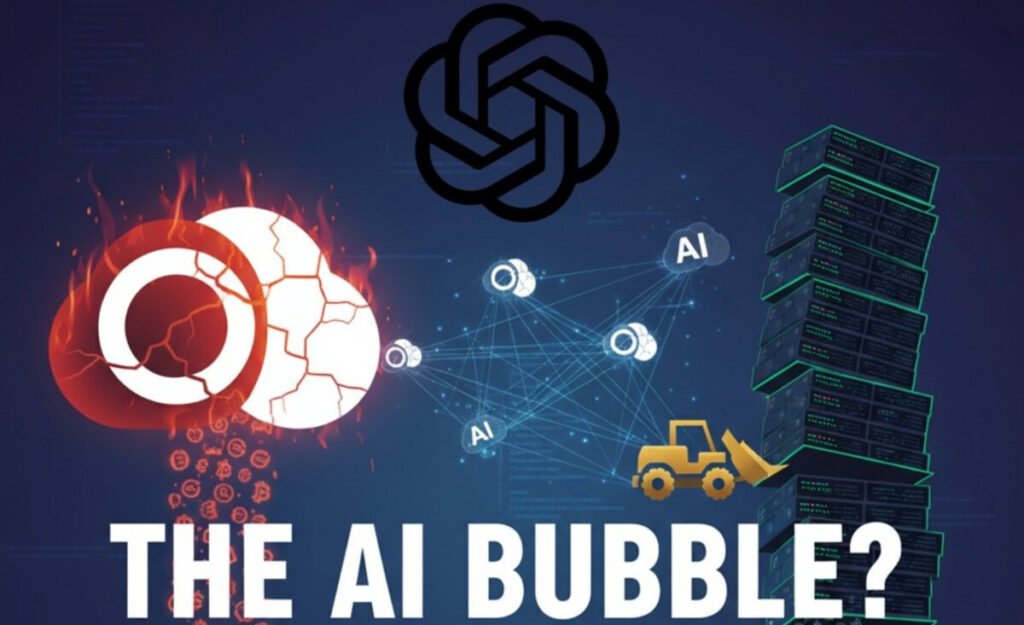

For some time now, “artificial intelligence” and “AI” have been the buzzwords in the tech industry. OpenAI is the company that started this great revolution, positioning itself as the name everyone thinks of when talking about AI thanks to its ChatGPT platform. But what if it’s not all as rosy as it seems? What if OpenAI is actually far from profitable and is just “burning money” waiting for something that might never happen (profitability)? The company’s finances seem to tell a story that points in that direction.
ChatGPT undoubtedly captured the world’s imagination. OpenAI’s CEO, Sam Altman, became the face of an artificially intelligent future, guiding humanity toward an era of unprecedented productivity and creativity. Large companies have also poured money into OpenAI, and the firm even changed its business model to allow for easier revenue streams. That said, all the accumulated revenue might not be enough.
According to a recent financial analysis by Will Lockett from Planet Earth and Beyond, OpenAI is in a catastrophic financial freefall. The company that powers a revolution is losing money at a rate that would make most established industries faint. Worse still, its solution to this cash-burning inferno appears to be dousing it with a trillion dollars’ worth of gasoline.
OpenAI $1 Trillion investment: The math of a money black hole
Let’s pull back the curtain on the finances. In the first six months of 2025, OpenAI reportedly generated $4.3 billion in revenue. That’s an impressive figure for a young company. The problem? During that same period, it posted $13.5 billion in net losses.
This isn’t just a rounding error. It means for every dollar OpenAI earns, it loses three.
This puts the company on track for a staggering $27 billion annual loss by 2025. For reference, we are talking about nearly double the $14 billion loss some reports had predicted for 2026. The math of its growth is even more alarming. For every single dollar of new revenue growth, OpenAI is spending an astonishing $7.77.
Lockett described the situation bluntly: “This is a money black hole. I cannot stress how unprecedentedly dreadful that is.” In any normal business, numbers like these would trigger emergency brakes, massive layoffs, and a desperate pivot to survival. But OpenAI is not a normal business. It’s as if its leadership is “fully aware they are driving headfirst into a wall at 100 mph, and instead of stepping on the brakes, they are mashing the throttle,” Lockett added.
Doubling down on a flawed premise
Instead of pivoting, OpenAI is doubling down. The company has announced plans to invest about $1.4 trillion annually in data centers and AI infrastructure through 2030. The brand has forged deals with giants like TSMC, Samsung, and Intel.

This investment is a bet that “more is more”—that building bigger and more powerful models is the path to profitability and, eventually, Artificial General Intelligence (AGI). But if the current operational costs are unsustainable, the future costs are astronomical.
Calculations based on industry standards (data centers costing 26% of their build cost annually to operate) paint a grim picture. By 2029, that trillion-dollar infrastructure plan could saddle OpenAI with approximately $650 billion in annual operational costs.
The company’s own optimistic revenue target for that same year? Just $125 billion.
The math simply doesn’t work. “Even if OpenAI hits its $125 billion 2029 revenue target,” Lockett notes, “it will still be making an annual loss of half a trillion dollars.”
This spending spree would be reckless enough on its own. It becomes deeply irrational when you discover what OpenAI’s own researchers have admitted.
The enemy within: OpenAI vs. itself
The most brutal criticism of OpenAI’s strategy comes from OpenAI itself. The core technical problem plaguing all large language models, including ChatGPT, is “hallucinations.” The term “hallucinations” refers to the AI’s tendency to confidently invent facts, sources, and answers. This one flaw makes them unreliable for the high-stakes business and enterprise tasks that OpenAI needs to sell to justify its valuation.
The company’s trillion-dollar bet assumes that this problem can be fixed by scaling up. That is, by adding more data and more computing power.
There’s just one problem. According to a research paper published by OpenAI, this assumption is false. Their own research reportedly found that “hallucinations are a core part of generative AI technology and can’t be fixed” with more data and compute.

The researchers did find a potential workaround called “active learning,” which essentially involves massive human oversight to correct the AI. But they concluded that “operating such models is so inherently expensive… it is almost always significantly cheaper to have a human do the task instead,” Lockett reports.
The company is betting a trillion dollars on a solution that its own scientists have proven will not work for a problem they admit is inherent to the technology.
Reality check: The 95% failure rate
This technical flaw is not just theoretical; it’s playing out in the real world. While headlines trumpet an AI takeover, the reality on the ground is one of widespread failure.
An MIT study found that 95% of AI pilots fail to generate any profit or productivity gains for the businesses implementing them. Other research, such as a report from METR, has even shown that AI coding tools can actually slow developers down due to the time spent finding and correcting the AI’s “helpful” errors.
This is the reality check against the hype. While some niche AI tools for data analysis are effective, the generative AI revolution that OpenAI champions is largely failing to launch. Even user engagement, the lifeblood of any tech platform, is showing signs of trouble. There are even reports of ChatGPT usage having peaked and now being in decline.
If not profit, then what?
If the technology is fundamentally flawed and the finances are catastrophic, why is this happening? Why continue to burn billions on a failing strategy?
The answer, critics argue, lies in the incentive structure. “They aren’t developing AI,” Will Lockett states. “They are trying to make the bottom line go up at any cost.”

It’s interesting how in the world of Silicon Valley, AI companies are not valued on core aspects like profitability or product-market fit. They are valued on data center spending. More spending signals more ambition, which attracts more investment at a higher valuation.
This creates a perverse incentive for executives. CEOs like Sam Altman don’t take a traditional salary. Instead, their wealth is tied to the company’s stock valuation. Altman reportedly stands to earn a $10 billion payday from his 7% stake in OpenAI’s for-profit conversion. This incentive structure encourages executives to keep pushing things to enrich themselves before the inevitable bubble pops. Bankers and VCs who previously supported the “AI hype” are now quietly warning of a bubble.
The future of OpenAI and the AI bubble
So, is OpenAI’s goal of profitability in the next few years realistic?
The numbers suggest it’s nearly impossible. The company’s revenue growth is already collapsing, falling from 250% in 2024 to just 56% in 2025. To break even, OpenAI would need to triple its revenue annually through 2030. Meanwhile, its core products are failing in 95% of business pilots.
This sets the stage for a brutal reckoning. The $6 billion investor bailout OpenAI took at the end of 2024 merely delayed the inevitable. The company’s trajectory, without a quick and radical restructuring, points toward bankruptcy.
But this isn’t just about one company. OpenAI controls 61% of the US generative AI market and has absorbed over 20% of all AI venture capital. So, basically, there’s a high concentration of risk for an entire industry in a single entity.
When this bubble bursts, it won’t be a quiet failure. It threatens to take the entire AI industry down with it. It could wipe out a big chunk of the $192.7 billion in VC funding poured into the sector.
This is the paradox at the heart of OpenAI. It’s a company built on the promise of superhuman intelligence that is being run with what appears to be a stunning lack of human common sense. It is a story of “greed at the cost of everything,” and it is hurtling toward a conclusion that will impact all of us. Let’s wait and see how events develop.
The post The Trillion-Dollar Paradox: OpenAI Loses $3 for Every $1 It Earns appeared first on Android Headlines.
